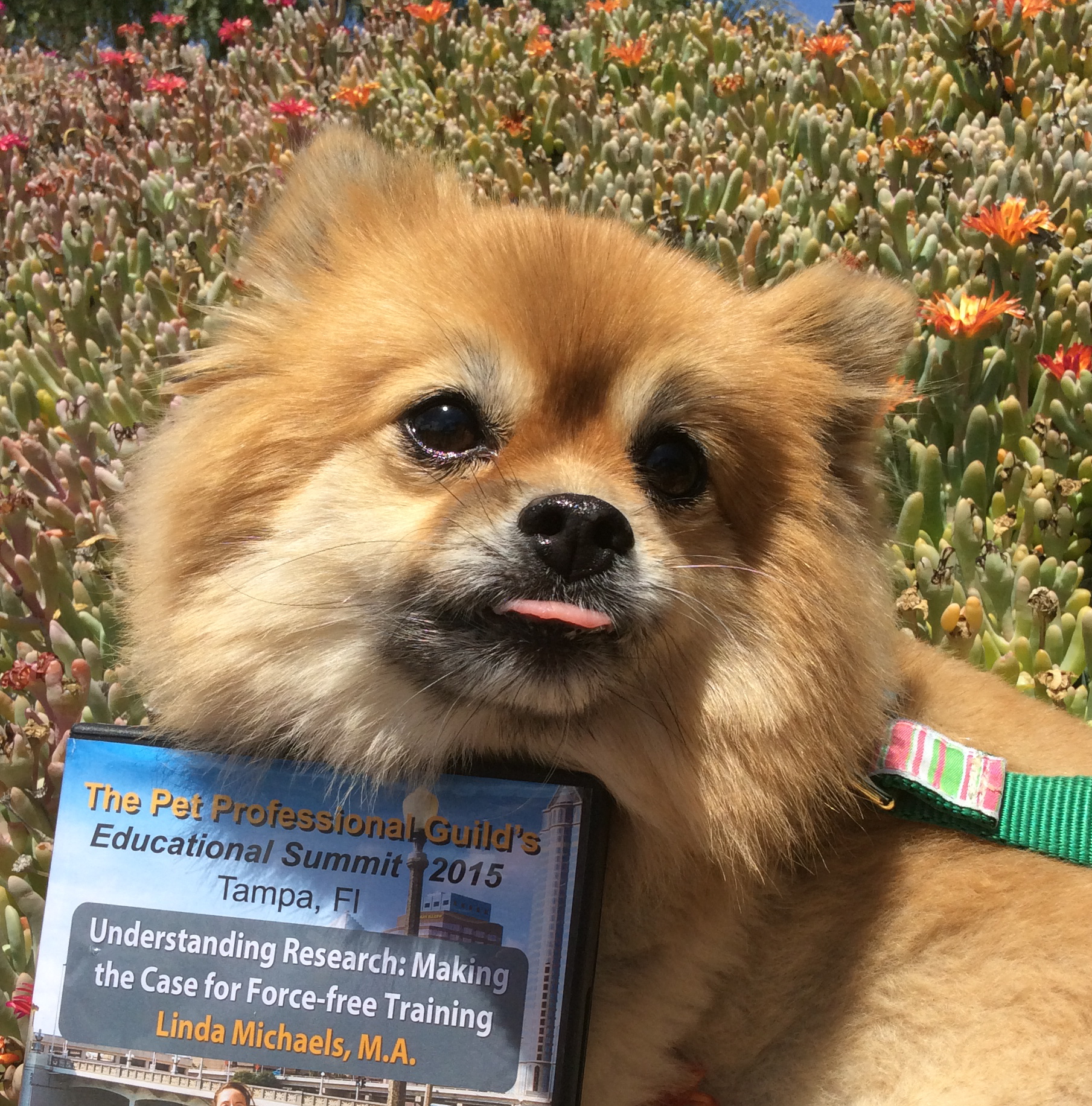Part 1 of the Interview with Linda Michaels M.A., Psychology: Making the Case for Force-Free Dog Training
by Denise O’Moore, Dog Sense Facebook Group
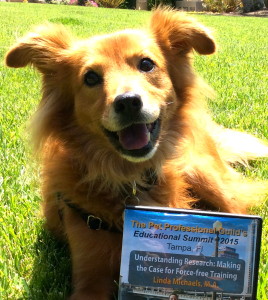 Denise: Hi all and welcome! Tonight we have the one and only Linda Michaels M.A. joining us to discuss making a case for force – free training. Welcome Linda – thank you for joining us!
Denise: Hi all and welcome! Tonight we have the one and only Linda Michaels M.A. joining us to discuss making a case for force – free training. Welcome Linda – thank you for joining us!
It’s good to have you here to ask you about the release of your DVD, “Understanding Research: Making the Case for Force-free Dog Training”.
Linda Michaels M.A.: Thank you so much for inviting me, Dog Sense. I feel very much at home here! This is my seminal work, and greatest contribution to the force-free training mission, bridging the gap between research, dog training and the pet parent. This presentation will help you back up your force-free methods with scientific facts. Facts and science are much harder to argue with than opinion or speculation.
The seminar I presented at the 2015 PPG Summit, titled “Understanding Research: Making the Case for Force-free Training,” is now available on DVD, for those of you who could not attend the summit. https://www.dogpsychologistoncall.com/learn-how-to-make-the-case-for-force-free-dog-training-from-linda-michaels-m-a-psychology/
Denise: Linda what made you decide to develop the topic of Making the Case for Force-free Dog Training, using research?
Linda: I felt it was my calling as an ardent animal lover and responsible professional to share what I could to help others Make the Case for Force-free Training supporting our arguments with scientific evidence. So-called “training” collars designed to inflict pain (shock, prong and choke) and dominance training methods that often cause pain and condition fear have become the norm for many trainers and pet parents. In my opinion, their enormous popularity stems in large part from huge advertising budgets and the lack of standards of competence, transparency, and accountability in the dog training field.
Denise: Linda what motivated you to take a stand for force-free training?
Linda: More than 15 years ago, I first began applying my graduate training in learning and behavior, and research experience in behavioral neurobiology, to canine behavior consulting. The field was moving quickly in the direction of Positive Reinforcement methods. I started my career on the ground floor of a progressive “trainers in training” program at the San Diego Humane Society. Little did I know then that the era of Positive Dog Training would not last long. Much to my dismay and disbelief, dominance training methods and collar devices designed to cause pain came back with a vengeance. As so many of us are, I was driven to try to alter the course of dog training. I created Understanding Research: Making the Case for Force-free Training, and The Hierarchy of Dog Needs TM unveiled in the seminar, because learning shouldn’t hurt.
 Denise: Linda so how does understanding research help trainers?
Denise: Linda so how does understanding research help trainers?
Linda: The first section of the seminar is about Understanding Research. As science-based dog trainers, it’s important that we understand scientific research in order to most effectively support our position as Force-free trainers. The seminar shows how understanding scientific research supports the force-free training you’re already doing, and how you can argue your case even better. We examine where science-based dog training comes from by taking a look at the history of “learning” and behavior modification, and specifically, how psychology relates to dog training. We open the door to Darwin, Pavlov, Skinner, Breland & Breland, Wolpe.
Denise: Are you referring to peer-reviewed studies in the seminar?
Linda: Yes! I also discuss why peer-reviewed studies are so important, and how to critically analyze a scholarly journal article.
Denise: What are the types of research studies that pet professionals can use to make the case for force-free training?
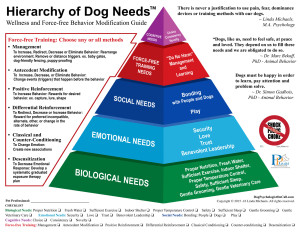 Linda: The third section of the DVD discusses specific types of research studies including: surveys, case studies, correlational studies, functional analysis and single subject design and experimental studies. You’ll see fascinating video from the Russian silver fox study that examines selective breeding for tameness and aggression. I discuss WHEN and WHY case studies are important and outline some of the features and criteria of a rigorous scientific research study. Here’s one of my favorite resources, Good Trainers: How to Identify One by Dr. Karen Overall. This is not a study but important to us nonetheless.
Linda: The third section of the DVD discusses specific types of research studies including: surveys, case studies, correlational studies, functional analysis and single subject design and experimental studies. You’ll see fascinating video from the Russian silver fox study that examines selective breeding for tameness and aggression. I discuss WHEN and WHY case studies are important and outline some of the features and criteria of a rigorous scientific research study. Here’s one of my favorite resources, Good Trainers: How to Identify One by Dr. Karen Overall. This is not a study but important to us nonetheless.
Denise: Linda what are some “opinion-swaying” scientific resources for force-free dog trainers?
 Linda: Scott, Positive Police Dog Trainer, Guy Williams is opening the IMPACT Working Dog Conference with the Hierarchy of Dog Needs, which is very big deal for all in my opinion.
Linda: Scott, Positive Police Dog Trainer, Guy Williams is opening the IMPACT Working Dog Conference with the Hierarchy of Dog Needs, which is very big deal for all in my opinion.
Linda: As far as “opinion swaying”, The second section of the seminar DVD helps trainers and other pet professionals make the best use of research and other resources available to us. I supply resources on everything from scholarly journal articles supporting force-free methods to No Shock, No Prong, No Choke, No Dominance Facebook pages that cite and collect these resources, and I introduce the Hierarchy of Dog Needs as a resource as well.
 Denise: What are the types of research studies that pet professionals can use to make the case for force-free training?
Denise: What are the types of research studies that pet professionals can use to make the case for force-free training?
Linda: Regarding RESEARCH, the third section of the DVD discusses specific types of research studies including: surveys, case studies, correlational studies, functional analysis and single subject design and experimental studies. You’ll see fascinating video from the Russian silver fox study that examines selective breeding for tameness and aggression. I discuss WHEN and WHY case studies are important and outline some of the features and criteria of a rigorous scientific research study. Here’s one of my favorite resources, Good Trainers: How to Identify One by Dr. Karen Overall. This is not a study but important to us nonetheless.
Denise: Linda how can people investigate and analyze a topic without being an expert?
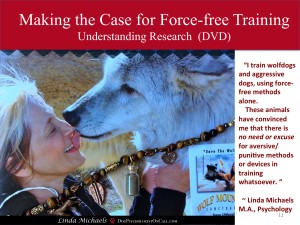 Linda: The fourth section of the seminar describes how I myself approached the “hot topic” issue of wolfdog training before I could be considered an expert, in order to justify training them. I describe how I researched a subject (wolfdogs) that I knew little about, and reached a conclusion that I could support with confidence to successfully argue my case to train them as a result of my investigation and analysis. You’ll see videos of wolfdog training with force-free methods alone in this seminar.
Linda: The fourth section of the seminar describes how I myself approached the “hot topic” issue of wolfdog training before I could be considered an expert, in order to justify training them. I describe how I researched a subject (wolfdogs) that I knew little about, and reached a conclusion that I could support with confidence to successfully argue my case to train them as a result of my investigation and analysis. You’ll see videos of wolfdog training with force-free methods alone in this seminar.
Denise: Have you found much support for using exclusively force-free methods among professionals in dog-related fields?
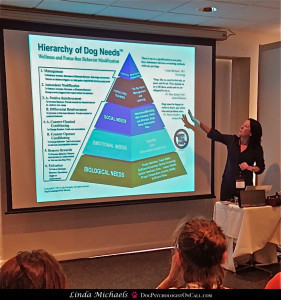 Linda: Yes! Dr. Katrina Ward, veterinary behaviorist, presented the Hierarchy of Dog Needs to the Australian Veterinary Association’s Tasmanian branch. Dr. Joanna McLaughlan, veterinary behaviorist, uses the Hierarchy in the reference packages she gives to her patients. Dr. Joanna McLaughlan, veterinary behaviorist, uses the Hierarchy in the reference packages she gives to her patients. Rescues, working dog trainers and others are finding the Hierarchy of Dog Needs helpful to teach the importance of meeting our dogs’ needs and force-free training methods to others.
Linda: Yes! Dr. Katrina Ward, veterinary behaviorist, presented the Hierarchy of Dog Needs to the Australian Veterinary Association’s Tasmanian branch. Dr. Joanna McLaughlan, veterinary behaviorist, uses the Hierarchy in the reference packages she gives to her patients. Dr. Joanna McLaughlan, veterinary behaviorist, uses the Hierarchy in the reference packages she gives to her patients. Rescues, working dog trainers and others are finding the Hierarchy of Dog Needs helpful to teach the importance of meeting our dogs’ needs and force-free training methods to others.
Denise: Linda what else will you be doing to help make the case for force-free training?
Linda: I plan to be speaking and teaching on the subject of Making the Case for Force-free Dog Training and the Hierarchy of Dog Needs in a variety of venues and locations after the release of my handbook of the Hierarchy of Dog Needs. I am in the process of writing a Handbook to accompany The Hierarchy. The handbook details each level of the pyramid, every item listed on each level, and all of the force-free behavior modification methods. The rationale for inclusion of the methods listed and the exclusion of aversive/punitive methods is fully supported with scientific research. I hope to have the Handbook of the Hierarchy of Dog Needs out by the end of the year. It is a tool for everyone from pet professionals to pet parents who would like to have a guide on hand for each subject.
Linda: The Hierarchy of Dog Needs may be used as an assessment tool to help identify areas that need attention, as a teaching tool, as a handout, speaker slide or for blog subject material and more. I will be detailing a list of different ways it can used on the Hierarchy of Dog Needs page.
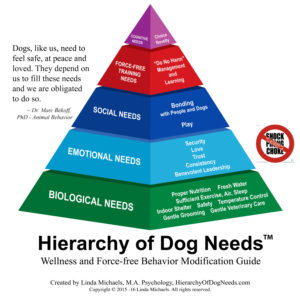 Denise: That sounds fantastic Linda – when do you see it being available?
Denise: That sounds fantastic Linda – when do you see it being available?
Linda: The Hierarchy of Dog Needs Handbook should be available by the end of the years. I’m just loving writing it!
Denise: And one from earlier Linda – I see in the “Making the Case” DVD seminar and in your Hierarchy that you are not recommending +P, -R and ALSO not –P nor Extinction! Isn’t this radical?
Linda: This speaks to both Denise and Patick: Barring neurological damage and biological factors such as hormonal fluctuations, in terms of behavior modification, wonderfully, there isn’t a behavior I can think of that cannot be effectively addressed with Management, Antecedent Modification, Differential Reinforcements of DRI (Incompatible) DRA (Alternate) DRO (Other – no undesired behavior in a predetermined amount of time) DRL (Lower frequency in a predetermined amount of time), Counter-conditioning and/or Desensitization.
Linda: No, Denise…not radical in my corner of the dog world! +P and –R are absent because although these methods decrease frequency of behavior (the main effect), the side effects (fear, generalization of response to stimulus in the treatment environment, etc.) are of concern and generally unacceptable effects to force-free trainers.
Denise: Not radical here either but for some it is. Thank you for your answer.
 Linda: And moreover, There is also more than sufficient evidence showing that Extinction and Negative Punishment are often perceived as aversive to dogs. Citation Jakovcevic, A., et al., (2013). Frustration behaviors in domestic dogs. Journal of Applied Animal Welfare Science. 16 (1).
Linda: And moreover, There is also more than sufficient evidence showing that Extinction and Negative Punishment are often perceived as aversive to dogs. Citation Jakovcevic, A., et al., (2013). Frustration behaviors in domestic dogs. Journal of Applied Animal Welfare Science. 16 (1).
Denise : Linda – wow thank you so much for all your answers! And thank you to all members on – great questions! linda will be posting links for her DVD so make sure you check them out!
Linda: And you can download and read more about the Hierarchy here.
Denise: Thank you Linda!
Linda: Thank you, Denise O’Moore and everyone at Dog Sense for putting this together for us. What a great opportunity of share and speak to your amazing followers…of which I am one!
See Part 2 of the interview, with additional questions, coming soon!
